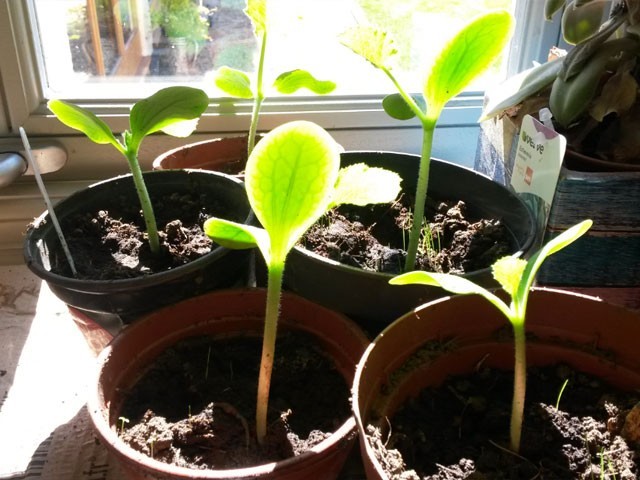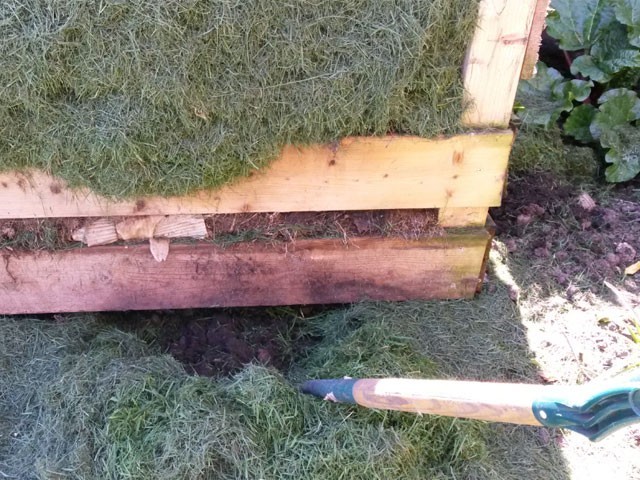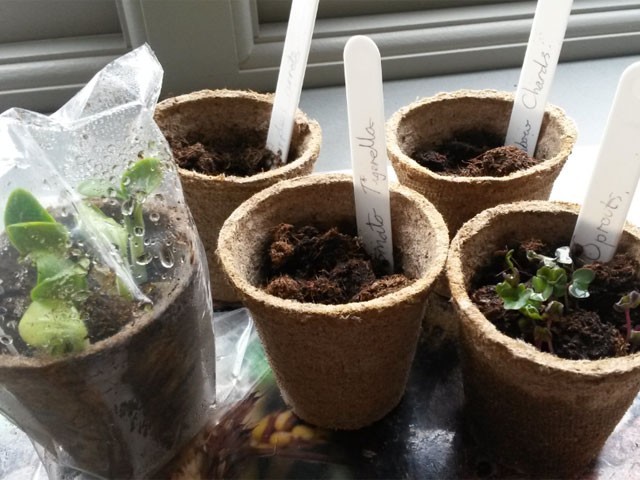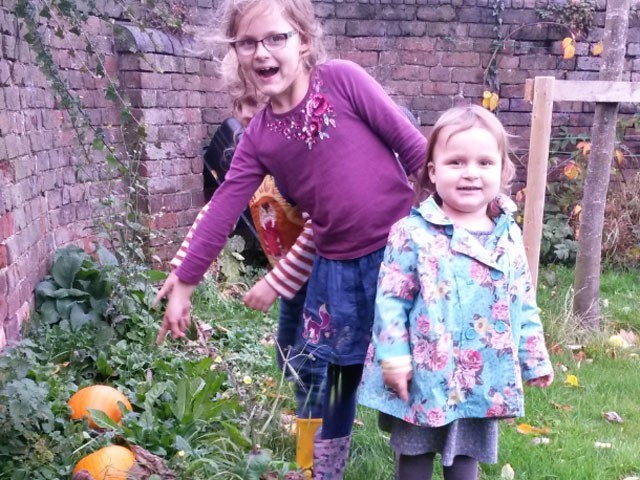I'm anything but green-fingered, but even I have caught the gardening bug and have managed to coax some plants out of their shells ;-) Admittedly we now have the space to have a proper veg plot since our move to 'the country' but even with a lot less space I think my experience has shown me that much is possible.

Planting fruit and vegetables in the garden is great in so many ways; it will give you a great source of fresh produce during the season, reduces the carbon footprint of your food, it is intensely satisfying growing and eating your own produce, there's ample opportunity for making easy jams and chutneys and giving these as personal gifts, I could go on! Aside from all of these aspects, it's also great as an activity to do with children with lots of different aspects that they can get involved with as suits you, and all for little cost!
Growing in your available space
Little/no garden
Herbs, strawberries, tomatoes can all be grown in pots and are therefore suitable for patio gardens, balconies and even window boxes. Grow some basil to make your own pesto or grow mint to add to new potatoes or to make a fab and easy pea and mint soup!
Small garden
As above, plus a courgette plant is attractive, one plant produces lots of courgettes, so there's no need for rows of them. Try also rhubarb which also needs a discreet space to grow in and is attractive as well as fruitful!
Larger garden
The sky's the limit, but Potatoes, pumpkins, raspberries, carrots, leeks and beetroot all need more space than some other varieties and are therefore specifically suitable for those with more space to plant.
Get the children involved:
• Buying the seeds and seed plants
Think about what space you have and what you want to grow, but also what kind of soil you have available and choose seeds and plants accordingly. It's great to get the children just as involved in picking the fruit and vegetables they'd like to grow and eat, and maybe getting each responsible for a particular crop.
• Dig out the compost from your composter

To grow plants from seed, you'll need to initially plant them in nutrient-rich soil to give them the best possible chance. Whilst not everyone has space/time to get their own composter in the garden, there are lots of different sized and easy composters available which make it more do-able for many. If you're DIY-inclined, make your own out of some old pieces of wood e.g. from an old fence, scrap skirting boards, floor boards, etc. With a composter in place, it allows you to use your kitchen waste to have your own compost on tap, ready for gardening in the spring and summer. It also reduces what goes to landfill, and the need to buy compost from the garden centre and, it is claimed, will lessen any perceived need for fertilisers.
• Planting and nurturing indoors

Once you've chosen the types of fruit and veg you want to grow, you'll probably need to plant many if not all indoors initially whilst they germinate. For this, it's useful to have small pots (you can buy biodegradeable ones which can be planted outside together with the plant to minimise root disturbance on transfer) and compost (ideally home-made as noted above, or otherwise obviously from all good garden centres!) to plant them in.
• Planting in the ground outside
Generally, once the seedlings are well-established (have about 4 'true' leaves i.e. not the first leaves that come through which look slightly different, but the next round of leaves) and the risk of frost is over, you can transfer most of your plants to the ground outside. Generally experts suggest 'hardening off' your seedlings first i.e. gradually getting them accustomed to outside conditions. This will usually involved initially leaving them in sheltered spots outside for increasing periods of time during the day, but bringing them back in at night. After a couple of days of this, you can leave them in more exposed positions during the day, but still bring them in at night. Eventually they'll be ready to plant outside full and be hardened to the conditions there.
• Watering as necessary
Obviously read the seed/plant labels, but generally newly planted and transferred seedlings will need to be watered very regularly to prevent the delicate roots from drying out. This is a great part for the children to get involved and take responsibility!
• Harvesting

Probably the most exciting and satisfying part of the process is harvesting your own home-grown produce. The children will love digging up potatoes, picking pumpkins ready for Halloween and pinching raspberries in the summer.
• Cooking and baking with the harvest
Obviously the opportunities are too numerous to list, but jam-making, chutneys, vegetable cakes, veg with your dinner, soups, fruit cakes and crumbles to name just a few. Jam is so easy, makes a great present and is popular with the children, so that's always a good one to start with.
For anyone in Staffordshire, I really like Piper's Garden Centre, a small, independent centre which focuses on selling seeds and plants rather than accessories and gifts. You can buy individual seeds potatoes here too, so you can easily try different types of potato to see what works and tastes best.